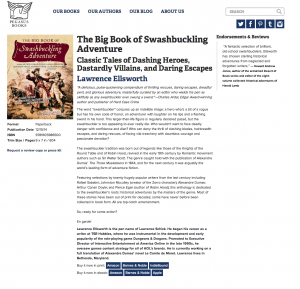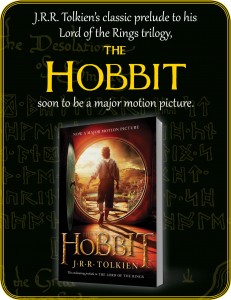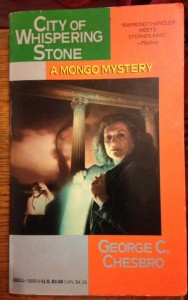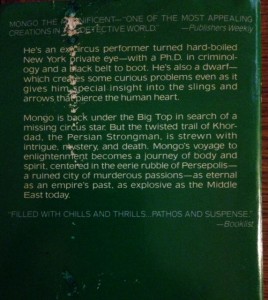Brisk winds and the aftermath of a rainy Friday night didn’t dampen the fun at the 22nd annual Little Red Lighthouse Festival this past Saturday, held on the grounds under the George Washington Bridge, aka the great gray bridge, near the Little Red Lighthouse, the last beacon light to shine in Manhattan. I have written about the landmark several times in recent years, including after I attended last year’s fall festival. The Parks Dept opens the lighthouse to visitors on these occasions, allowing New Yorkers to fully appreciate this splendid example of maritime architecture. After I toured the lighthouse last year, I wrote about its history and the children’s book that improbably helped to keep it standing on the shore of the Hudson: 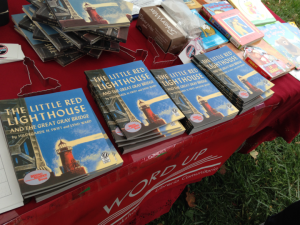
“If you’ve never had a close-up view of [the George Washington Bridge and the Little Red Lighthouse] and aren’t certain where they are or how to see them for yourself, we’re talking about upper Manhattan on the island’s west side roughly level with what would be West 178th Street and the Hudson River. I get there on my bike, pedaling on good pavement alongside the river most of the way from my neighborhood around West 100th Street and Riverside Drive. The area can also be reached from Washington Heights, near 181st Street, and in both cases it’s accessible to walkers as well as cyclists. The forty-foot tall lighthouse–whose exterior is dotted with porthole windows and decked out in bright red enameled paint with a white cone and clear glass at the top–sits below the lower deck of the bridge, close to the monumental steel foot of the span’s eastern arch. According to a NYC Parks Dept web page, the two structures became most indelibly linked in the public imagination in the early 1940s, and even earlier in the city’s maritime history. Here’s a lightly edited version of the Parks Dept. article:
‘In the early 20th century, barge captains carrying goods up and down the Hudson demanded a brighter beacon. The [lighthouse] had been erected on Sandy Hook, New Jersey in 1880, where it used a 1,000 pound fog signal and flashing red light to guide ships through the night. It became obsolete and was dismantled [but not destroyed or discarded] in 1917. In 1921, the U.S. Coast Guard reconstructed this lighthouse on Jeffrey’s Hook [future site of the George Washington Bridge] in an attempt to improve navigational aids on the Hudson River. Run by a part-time keeper and furnished with a battery-powered lamp and a fog bell, the lighthouse, then known as Jeffrey’s Hook Lighthouse [the name since the early 1800s for the shelf of Manhattan schist that juts out in to the river right there], was an important guide to river travelers for ten years. The George Washington Bridge opened in 1931, and the brighter lights of the bridge again made the lighthouse obsolete. In 1948, the Coast Guard decommissioned the lighthouse, and its lamp was extinguished.
‘The Coast Guard planned to auction off the lighthouse, but an outpouring of support for the beacon helped save it. The outcry from the public was prompted by the children’s book, The Little Red Lighthouse and the Great Gray Bridge, written by Hildegarde Swift and Lynd Ward in 1942. In the popular book, the Little Red Lighthouse is happy and content until a great bridge is built over it. In the end, the lighthouse learns that it still has an important job to do and that there is still a place in the world for an old lighthouse. The classic tale captured the imaginations of children and adults, many of whom wrote letters and sent money to help save the icon from the auction block.’
The Parks’ web page adds that in 1951 the Coast Guard gave the lighthouse and grounds to the City, and in 1979 the Little Red Lighthouse was officially added to the National Register of Historic Places. Refurbishments took place in 1986, when on the 65th anniversary the concrete foundation was restored, and in 2000 when it was repainted, true to its original shade of red.
In a real sense, the persistence of the lighthouse on the Manhattan shoreline is a product of one of the first episodes of “historic preservation” in the modern history of New York City. Too often, the city and posterity have been the loser in those battles, such as what occurred in 1963, when–unaccountably to current-day New Yorkers–the old Penn Station was torn down.”
I will add that it’s a great time for parks and historic sites in New York City, with such projects as the ongoing restoration of High Bridge, the footbridge that’s connected the Bronx and Manhattan since 1842, though it’s been derelict and off-limits to hikers for many years. Also heartening was the news last week that more than $130 million will be spent to upgrade and renovate thirty-five NYC parks that have historically been neglected, even while better known parks, like Central Park and Prospect Park, garner lots of resources.
I didn’t enter the Little Red Lighthouse on Saturday, as the line was long and I was glad to let others see it for the first time. I was just happy to walk the grounds and stop at the booths of several upper Manhattan organizations and businesses. Among these was the NYC Parks Dept, which sent several urban rangers to staff an information table; Summer on the Hudson, @summeronthehudson on Twitter, whose director Zhen Heinemann was on hand making sure everything ran smoothly; Word Up Books, “a completely volunteer run community bookshop, and arts space in Washington Heights,” on Amsterdam Ave at 165th Street, near the Morris-Jumel Mansion, the oldest wooden structure in Manhattan, built in 1765; graphic artist Norman Ibarra, who was selling a handsome poster he’s designed, printed on quality paper, that shows the seven lighthouses along the Hudson River, upstate from Athens and Saugerties south toward Manhattan and Jersey City; the National Lighthouse Museum, near the Staten Island Ferry terminal, whose representatives told me about the hoped-for restoration of the Old Orchard Beach lighthouse, wrecked during Hurricane Sandy; and Anthi’s Greek Specialities, a food vendor that was selling tasty spinach pie and baklava. Along with the above Facebook post I sent out that afternoon, I took lots of pictures during the festivities. Here are the best of them.
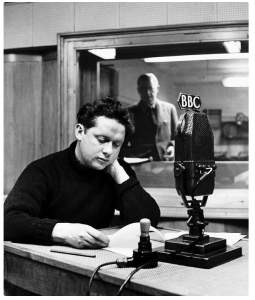
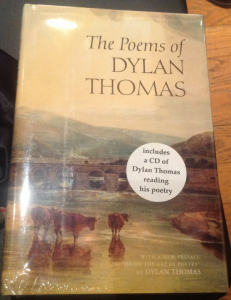 I was fortunate to attend an event remembering Dylan Thomas on the 61st anniversary of his death, November 9, hosted by my friend Peter Schulman and New Directions, Thomas’s longtime publisher. Pictures, reportage, and links at my Storify post and below.
I was fortunate to attend an event remembering Dylan Thomas on the 61st anniversary of his death, November 9, hosted by my friend Peter Schulman and New Directions, Thomas’s longtime publisher. Pictures, reportage, and links at my Storify post and below.

